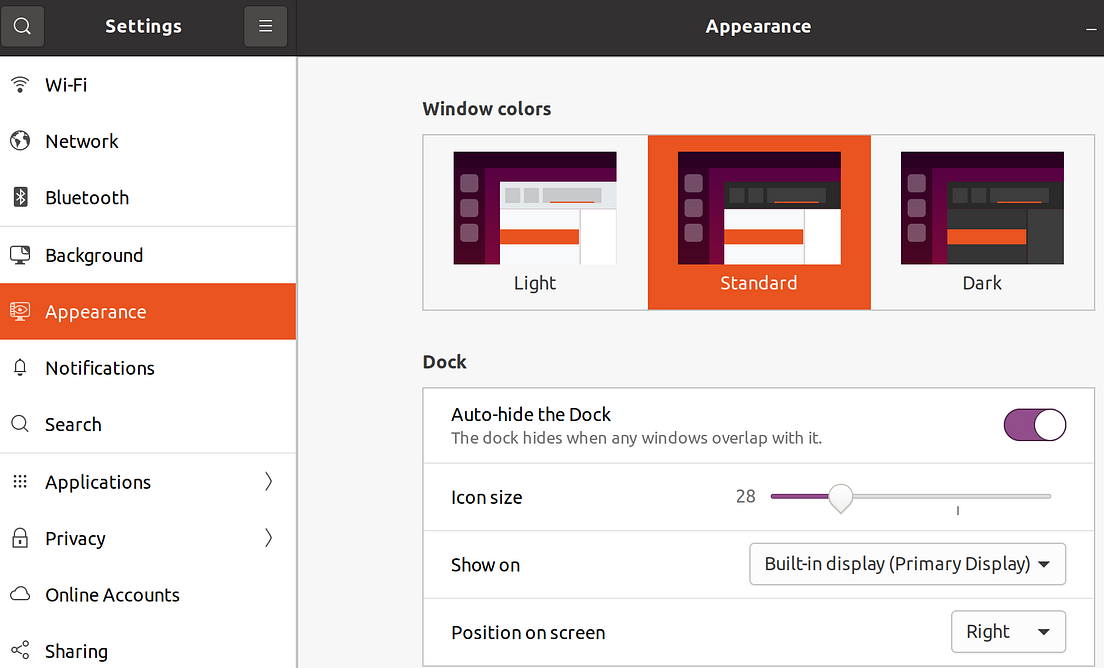

- #How to put ubuntu on a mac pro install#
- #How to put ubuntu on a mac pro drivers#
- #How to put ubuntu on a mac pro driver#
- #How to put ubuntu on a mac pro download#
Select the /dev/sdb2 partition (yours may be different, make sure you choose your 10GB Ubuntu partition).No worries because we will fix it after the install. I think there is a bug in the installer because it always installs GRUB to the EFI partition of /dev/sda/.
#How to put ubuntu on a mac pro install#
At the bottom of the window, select /dev/sdb2 as the location to install the boot loader (the same partition that you will install Ubuntu and mount at /. When you get to Partitioning, choose “Something Else.”. My installs failed when either were checked. Ensure that “Download updates while installing” and “Install this third-party software” are Unchecked. Click on “Install Ubuntu” and follow the prompts until you get to Preparing to Install Ubuntu. Select “Try Ubuntu” and let it boot up. Start Up Manager before installing Ubuntu. If you see two “EFI” sections, choose the one on the left. If you changed the icon of the EFI folder on the SD card, then your start up screen will look similar to mine. Reboot computer and press and hold the option key after you hear the startup chime. Ensure your Ubuntu Live USB is inserted. Just drag the “brcmfmac43602-pcie.bin” file that you downloaded earlier to the SHARE partition on the Micro SD Card. #How to put ubuntu on a mac pro driver#
Copy the wireless driver to the share partition on your SD Card. I used an Ubuntu icns file I downloaded off of the internet. Find an icon you like and apply it to the EFI folder. OPTIONAL: With the EFI partition mounted you can change the icon to an Ubuntu icon (or any other icon you prefer. Once you make the edits to nf, save it and close it. They are not adjacent so you will have to scroll through and find them. Just open the nf file in a text editor and remove the “#” that precedes these two lines in the file. Optionally, you can edit the nf file in order to remove the Recovery HD, and Legacy mode boot options. #How to put ubuntu on a mac pro drivers#
On the SD Card EFI folder, delete the 32-bit drivers and executables. Drag the rEFInd EFI folder and copy it to the EFI partition of the SD Card by dragging and dropping. Sudo mount -t msdos /dev/disk2s1 /Volumes/efisd Type the following commands in Terminal to mount the EFI partition of the SD Card:. Above, you can see that the EFI partition on my 32GB flash drive is /dev/disk2s1. Open Terminal and type the following commandģ: Apple_Boot Recovery HD 650.0 MB disk0s3Ģ: Microsoft Basic Data UBUNTU 10.5 GB disk2s2ģ: Microsoft Basic Data HOME 18.1 GB disk2s3Ĥ: Microsoft Basic Data SHARE 3.1 GB disk2s4. Select options and select GUID partition scheme. Will be changed to ext4 during install of Ubuntu. 10GB for the Ubuntu root partition (FAT32). Use Disk Utility to create three partitions on the SD Card. #How to put ubuntu on a mac pro download#
A verified, and bootable backup of your system.Ĭreate a bootable Ubuntu USB stick using these instructions on the Ubuntu download page.  8GB USB stick (to create the Ubuntu install USB). You can use any SD Card or MicroSD Card with adapter.
8GB USB stick (to create the Ubuntu install USB). You can use any SD Card or MicroSD Card with adapter. 
Nifty MiniDrive Adapter (not required.Wireless Drivers – brcmfmac43602-pcie.bin from.rEFInd Download Page – get the CD-R image.I just deleted GRUB from /dev/sda to see what would happen and found that not only did Ubuntu boot but it booted a lot faster without it! In all honesty, I don’t understand enough about EFI booting to understand how the boot process is being completed without GRUB. When booting into Ubuntu you will first use the Apple Boot Manager (by holding the “option” key) to get you to rEFInd, and then rEFInd will boot Ubuntu in verbose mode.Įventually, I would like to remove rEFInd as well and just use the Apple StartUp Manager to boot directly into Ubuntu but I have not found a good tutorial yet. When complete, you will have Ubuntu installed to your SD card, rEFInd installed on your SD Card, and GRUB will be removed from your internal hard drive. This post will describe exactly what I did to accomplish this goal. I decided I was going to install Ubuntu on the SD Card so that it was always available but without making any permanent modifications to my internal drive. I wanted to do something with the SD Card slot and saw an ad for the Nifty MiniDrive. I recently purchased an early 2015 13″ Ratina MacBook Pro.







 0 kommentar(er)
0 kommentar(er)
